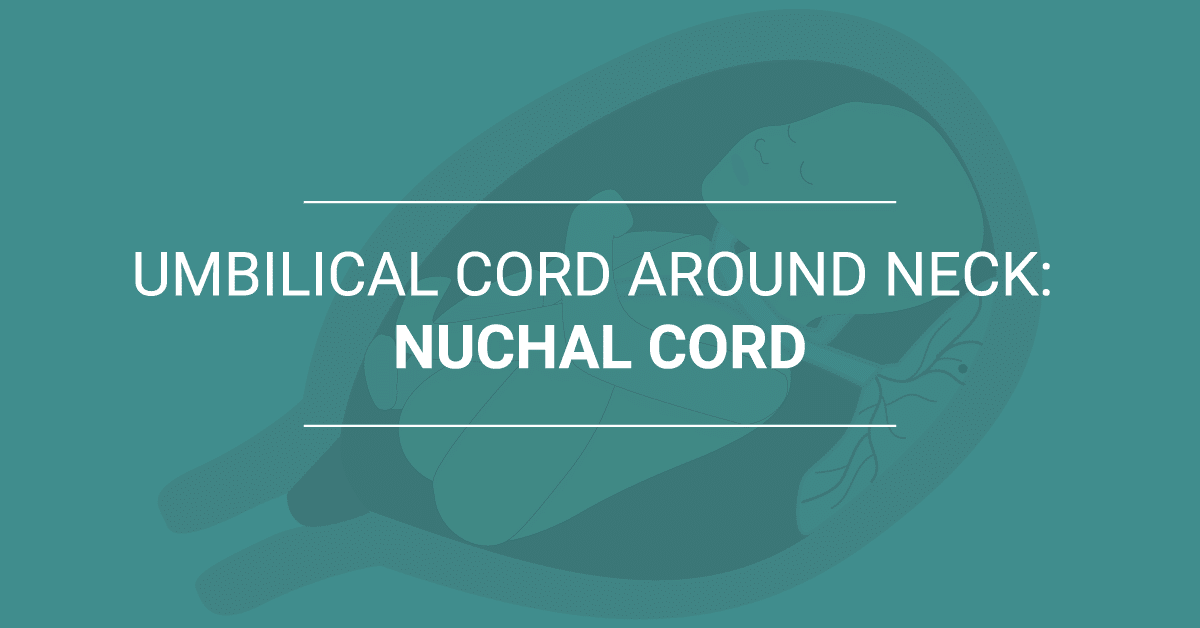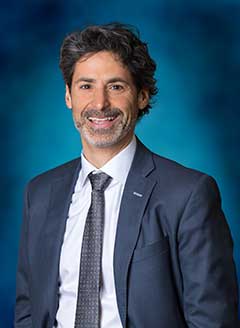
During pregnancy, the umbilical cord is a lifeline for a fetus, providing all of the blood, oxygen, and nutrients that they need to grow and thrive. In some cases, however, your baby’s umbilical cord can become a danger to them – such as when it wraps around a baby’s neck, resulting in strangulation.
When the umbilical cord is around a baby’s neck, it is known as a nuchal cord. While a nuchal cord may not always cause any problems, it can sometimes cause serious complications, including birth injuries such as hypoxic-ischemic encephalopathy (HIE) due to lack of oxygen during the birthing process. If a nuchal cord is present, then careful monitoring and prompt intervention can often prevent a birth injury from occurring.
What Is a Nuchal Cord?
Nuchal cords are incredibly common. According to one study, approximately 1 in 3 babies are born healthy despite the umbilical cord around their neck.
Nuchal cords occur when an umbilical cord goes around a baby’s neck, possibly due to the baby’s movement. In some cases, the umbilical cord wraps around the neck twice – a condition known as a double nuchal cord. Babies with multiple wraps of the nuchal cord have a higher risk of complications.
There is not a single cause of a nuchal cord. However, they are more likely to form when certain conditions are present, including:
- A twin or multiple pregnancy;
- Excessive amniotic fluid;
- The cord is particularly long;
- The cord has insufficient Wharton’s jelly; or
- The structure of the cord is poor.
Long-Term Effects of a Nuchal Cord
While most nuchal cords are benign and do not harm the baby, there is a possibility that the baby will suffer a birth injury due to a nuchal cord or a double nuchal cord. This primarily happens in one of three ways:
- The umbilical cord is compressed against the baby’s neck, reducing the flow of oxygenated blood from the mother to the baby.
- The nuchal cord restricts arteries and veins in the baby’s neck (strangling the baby).
- The nuchal cord causes venous blood to become congested, decreasing circulation.
When a baby does not get enough oxygen, either due to compression of the cord or the cord wrapping too tightly around its neck, it may suffer birth asphyxia or HIE. Asphyxia is a medical term for oxygen deprivation. The tighter that a nuchal cord is, the higher the risk of birth asphyxia.
A lack of oxygen to the brain during pregnancy or labour and delivery is associated with brain damage and significant long-term effects. Other potential birth injuries that may arise from a nuchal cord include fetal heart rate abnormalities, HIE, and even death.
Hypoxic-Ischemic Encephalopathy (HIE)
HIE is caused by oxygen deprivation (hypoxia) and limited blood flow to the brain at or near the time of birth. It often occurs because the blood flow between the mother and fetus through the umbilical cord is cut off or compromised in some way.
When a baby is diagnosed with HIE, it can have a lifelong impact on their development. The extent that they are affected depends on a number of factors, such as the severity and duration of the oxygen deprivation, the baby’s condition prior to the oxygen deprivation, and whether they received treatment immediately after the hypoxic event (such as cooling therapy).
Common long-term effects of HIE include:
- Cerebral palsy
- Intellectual or developmental disabilities
- Learning disabilities
- Speech delays and language disorders
- Behavioural and emotional disorders
- Nutritional concerns
- Seizures after birth
- Epilepsy
- Hearing impairments
- Oral health issues
- Orthopedic conditions
- Respiratory conditions
- Blindness or severe vision impairments
- Difficulty with walking and coordination
In many cases, the severity of these effects will not be known until a baby grows older and begins to miss developmental milestones. At this point, it is critical that parents seek out treatments and therapies to help their child manage their symptoms and/or improve their quality of life.
Contact Us Today
Contact us today to learn more about how our birth injury lawyers have helped families provide for their children and receive peace of mind.
Cerebral Palsy
Cerebral palsy (CP) is a motor disability that affects movement, muscle tone, and posture. It may be caused by oxygen deprivation or damage to the brain during pregnancy, birth, or in the first few years of life. Oxygen deprivation related to a nuchal cord may ultimately lead to a CP diagnosis.
There is no cure for CP. Instead, treatment focuses on addressing the symptoms of the condition, which may include lack of balance and muscle coordination; stiff muscles; exaggerated reflexes; floppy muscles; slow, writhing movements; tremors; difficulty walking; learning difficulties, excessive drooling; seizures; and challenges with fine motor skills. Each child with CP is affected differently.
Cerebral palsy is a lifelong condition that requires long-term medical care and various therapies and interventions. Common interventions include medications to lessen muscle tightness, decrease pain, and manage complications, physical therapy, and occupational therapy. Speech and language therapy may also be helpful.
Brain Damage
In some cases, a nuchal cord may cause anoxia, which is the complete absence of oxygen. When an umbilical cord is knotted (true knot), tangled, or otherwise wrapped around a baby’s neck, it can lead to anoxia. This lack of oxygen can cause permanent brain damage and in some cases, may lead to a stillbirth.
When the brain is deprived of oxygen completely, tissue in the affected areas of the brain may die. In severe cases, this can cause fetal death. If a baby survives anoxia, then it may experience a range of complications and long-term effects, such as:
- Seizures
- Delayed physical development
- Sleep disorders
- Muscle spasms or tremors
- Paralysis in certain parts of the body
- Difficulty with fine and gross motor skills
- Behavioural and emotional issues
- Developmental delays
- Learning disabilities
- Intellectual disabilities
- Cerebral palsy
Treatment for brain injury due to a nuchal cord depends on the severity of the injury and the specific symptoms that a child is displaying. In most cases, a child who suffered brain damage from a nuchal cord will require medical care, therapies, and assistance throughout their lives.
How Can Doctors Treat a Nuchal Cord?
After a nuchal cord has been diagnosed via ultrasound, doctors should carefully monitor both the mother and baby for signs of distress. If there are any signs of distress, then prompt delivery may be necessary to prevent a birth injury.
During labour and delivery, a foetal heart rate monitor should be used to detect oxygen deprivation. If the baby shows signs of distress, an emergency c-section may be necessary. Failure to diagnose a nuchal cord or to quickly deliver a baby who is experiencing birth asphyxia may be considered medical negligence.
A child who suffers brain damage due to a nuchal cord may experience lifelong challenges. They will likely require regular medical care, including visits with specialists such as neurologists. A child who experienced birth asphyxia may also require speech, physical, and/or occupational therapy, in addition to learning and behavioural support.
For parents and loved ones, caring for a child who suffered a birth injury due to a nuchal cord can be incredibly expensive. A child with brain damage may also require lifelong care. If a nuchal cord birth injury was caused by medical negligence, a birth injury lawyer can advise you of your rights and options for pursuing a legal claim.
Nuchal Cord Birth Injuries Caused By Medical Negligence
Although nuchal cords are not preventable, birth injuries from a nuchal cord may be avoided. Doctors must be conscientious to diagnose a nuchal cord and intervene when necessary. If a birth injury from a nuchal cord was caused by medical negligence, then the baby’s parents may be able to recover compensation for their losses.
If your child has suffered a birth injury due to a nuchal cord, you should reach out to a team of seasoned birth injury lawyers. Reach out to BILA today at 1-800-300-BILA or fill out our online contact form for more information or to schedule a consultation about your case.

Toronto birth injury lawyer Charles Gluckstein was appointed President of the Ontario Trial Lawyers’ Association from 2013-2014. Since 2014, Best Lawyers® International has consistently recognized him as a leader in the personal injury field. In 2014 he was awarded the LEXPERT Zenith Award for Leading Personal Injury Lawyer in Practice Excellence, in recognition of thought leadership and the setting of new standards for the Personal Injury Bar. In its annual publication, the Canadian Legal LEXPERT® Directory has listed Charles as being repeatedly recommended by his peers in the area of personal injury for the Toronto region.

